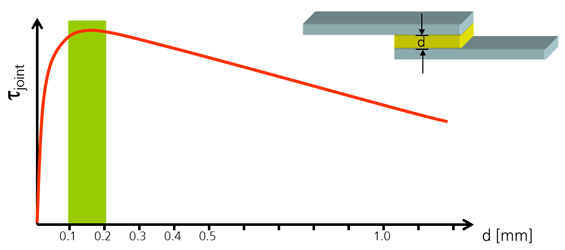6.5.1 Leap shear test
Principle of the lap shear test:
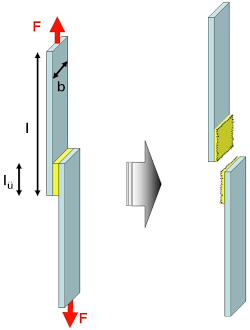 |
Mainly used for evaluating the usage properties and quality of adhesives as part of adhesive development, adhesive processing and quality control and for assessing the ageing of bonded joints after exposure to chemical and physical loads.
Force introduction parallel to the bonding area ( = shear stress)
w: specimen width (25 mm)
l: specimen length (100 mm) lo: length of the adhesive film (12.5 mm) By supporting the specimen or by using special clamping devices, any movement of the substrates is restricted (for high adhesive film thicknesses), thereby preventing excessive peel stresses. |
Principles for calculating the lap shearstrength:
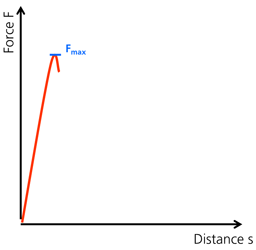
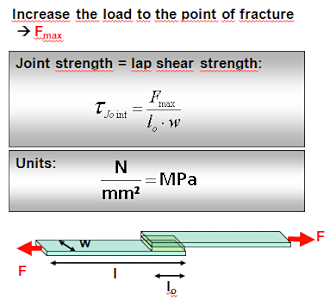
Lap shear test (DIN EN 1465)
- The most commonly used test on bonded joints.
- The joint strength tjoint as a force per unit area is measured in MPa (or N/mm2) under shearloads (lap shearstrength)
- Standardised specimen geometry:
- Substrates: 100 x 25 x 1.6 mm
- Bonding area: 12.5 x 25 mm
- Permissible tolerances are laid down and deviations from the standard geometry must be documented
- Surface pretreatment following the instructions of the adhesive manufacturer or according to the appropriate European standard (e.g. ISO 4588)
- At least 6 measurements must be made
- The samples must be stored and tested under standard climatic conditions as laid down in ISO 291
- The testing speed of the test machine must be chosen such that the bonded joint is destroyed within 65 ± 20 s under a constantly increasing load. Usually this is specified.
In principle the specifications in the standard can be deviated from (e.g. substrate thickness/geometry). These deviations must however be documented, so that correct comparisons can be made.
Parameters influencing the lap shearstrength:
In order to allow comparison of different results, the test parameters must be known and documented.
These include in the first instance:
- Substrate material and thickness
- Surface treatment
- Adhesive
- Adhesive film thickness
- Curing temperature and duration
- Overlap length
- Test temperature
- Test rate
- In some cases, ageing conditions
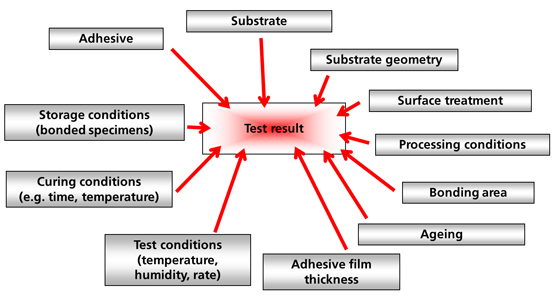
Shear load (effect of the adhesive film thickness):
Observation:
In the lap shear test the strength of a bonded joint (under otherwise constant conditions) depends on the thickness of the adhesive film (in general: the highest strength is attained at a film thickness of ca. 0.1 – 0.2 mm):
